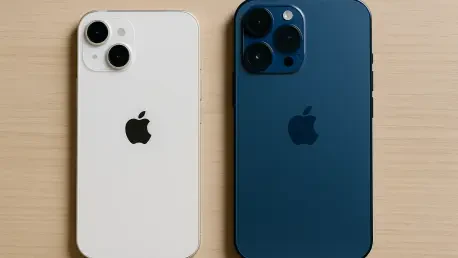What happens when a tech titan decides to rewrite the rules of smartphone launches? Picture a world where new iPhones drop not once, but twice a year, each release tailored to capture a different slice of the market. Apple, the industry giant known for its annual blockbuster unveilings, is reportedly planning a seismic shift to biannual iPhone releases starting next year. This strategy promises to keep fans on their toes and competitors scrambling, setting the stage for a dramatic reshaping of the smartphone landscape. Dive into the details of this audacious plan and what it means for everyone involved.
The significance of this shift cannot be overstated. Apple’s move to split its iPhone launches into fall and spring cycles isn’t just a tweak to the calendar—it’s a calculated bid for market dominance in an era of slowing smartphone growth. With sales plateauing globally, maintaining a competitive edge requires innovation not just in technology but in timing and reach. This strategy aims to cater to a wider audience, from tech enthusiasts craving cutting-edge features to budget-conscious buyers seeking value, while keeping Apple in the headlines year-round. Understanding this pivot reveals how the company intends to solidify its position as the leader in a fiercely contested industry.
Why Apple Is Ramping Up Its Release Schedule
Apple’s decision to double down on iPhone releases stems from a need to adapt to a maturing market. Smartphone saturation has slowed growth, with global shipments showing only marginal increases year over year, according to recent industry data. By introducing two distinct launch windows, the company seeks to reignite excitement and maintain momentum in a space where consumer interest can wane between annual events. This isn’t merely about quantity—it’s about redefining how often and how broadly Apple engages its massive user base.
Beyond market dynamics, this approach reflects a deeper understanding of consumer behavior. Different buyers have different needs and timelines; some wait for the latest premium device, while others prioritize affordability and practicality. Apple’s plan to stagger releases addresses these varied demands, ensuring that there’s always something new on the horizon to capture attention. This shift also aligns with the company’s broader goal of staying relevant in a tech world where competitors are quick to fill any gap in innovation or timing.
Unpacking the Strategy Behind the Dual Launches
The biannual release plan is meticulously designed to target specific segments with precision. In the fall of 2026, expect flagship models like the iPhone 18 Pro and Pro Max, alongside whispers of a revolutionary folding iPhone, all loaded with next-gen Apple Silicon for unparalleled performance. These high-end devices will likely set new benchmarks in design and functionality, aiming to captivate tech aficionados and early adopters who crave the latest and greatest.
Contrast that with the spring 2027 lineup, which will focus on accessibility without sacrificing quality. Models such as the iPhone 18, iPhone 18e, and a potential iPhone Air are slated to debut, featuring impressive specs like a 2nm A20 processor for enhanced battery efficiency at more approachable price points. This staggered rollout keeps Apple in the spotlight continuously, disrupting the traditional annual cycle that competitors have long relied on to plan their counter-moves. It’s a chess game of timing, where Apple positions itself several steps ahead.
The ripple effect of this strategy extends beyond just product launches. By splitting releases, Apple creates a constant buzz, making it harder for rivals to predict or respond effectively. Market analysts note that this could push annual iPhone shipments to six distinct models, covering every price bracket and consumer preference. Such a move not only broadens market reach but also challenges other manufacturers to rethink their own schedules and innovation pipelines in a bid to keep pace.
Industry Voices Weigh In on the Game-Changing Plan
Reactions from industry experts underscore the potential impact of Apple’s bold maneuver. “This isn’t just a schedule change; it’s a power play to keep competitors off balance while locking in consumer loyalty across multiple cycles,” said a prominent tech analyst during a recent panel discussion. The consensus is that Apple’s ability to dominate headlines twice a year could force smaller players into a reactive mode, struggling to match the pace and diversity of offerings.
Market research adds weight to these observations, projecting a significant uptick in Apple’s market share if this strategy succeeds. Reports suggest that diversifying releases could increase consumer engagement by as much as 30% in key demographics, as buyers find more entry points into the ecosystem. Some even speculate that this unpredictability might accelerate industry consolidation, with weaker competitors potentially merging or exiting as they fail to adapt to the heightened competition.
Not everyone is convinced of a flawless execution, however. A few industry watchers caution that managing two major launches annually could strain supply chains or dilute the impact of each release if not handled with precision. Despite these concerns, the overriding sentiment is that Apple’s track record of strategic innovation positions it well to navigate these challenges, potentially setting a new standard for how smartphone giants operate.
What This Means for Shoppers and Rivals Alike
For consumers, Apple’s new release cadence offers a refreshing array of choices tailored to different budgets and preferences. Fall launches will cater to those eager to splurge on premium technology, with devices boasting boundary-pushing features. Spring releases, on the other hand, will appeal to value-seekers, delivering solid performance without the hefty price tag. Shoppers are advised to track both cycles closely, comparing specs and pricing to snag the model that best fits their needs.
Competitors face a tougher road ahead as they grapple with Apple’s accelerated timeline. Rival brands will need to rethink their own launch strategies, possibly speeding up innovation or diversifying their portfolios to avoid being overshadowed. The pressure is particularly intense in the mid-tier segment, where Apple’s spring models could disrupt pricing dynamics and squeeze margins for other manufacturers. Staying agile and responsive will be critical for any brand hoping to hold its ground.
This shift also prompts a broader conversation about market evolution. Apple’s move signals a departure from the one-size-fits-all approach to smartphone releases, emphasizing segmentation and continuous engagement. Both consumers and competitors must adapt to this dynamic environment, where staying informed about product distinctions and launch windows becomes essential. The smartphone arena is no longer a once-a-year battlefield—it’s a year-round contest of innovation and strategy.
Apple’s Broader Vision for Tech Dominance
Looking beyond iPhones, Apple’s biannual release strategy fits into a larger blueprint for tech supremacy. The company is applying a similar diversification mindset to other product lines, such as MacBooks, targeting everything from budget-conscious students to high-end professionals. This multi-pronged approach aims to capture every corner of the tech market, ensuring that Apple remains the go-to brand across various categories and price points.
This focus on segmentation also addresses a historical challenge: ensuring each product gets its moment in the spotlight. Past iPhone launches have sometimes seen mid-range models overshadowed by flagship hype, with media coverage often glossing over nuanced differences. By separating releases, Apple can craft distinct narratives for each device, highlighting unique features and benefits. This clearer messaging could enhance consumer understanding and drive sales across all tiers.
Ultimately, Apple’s strategy reflects a response to a saturated market while proactively shaping future trends. Industry data indicates that smartphone growth hinges on capturing diverse demographics, a goal this plan directly supports. As Apple pushes toward total market coverage, it’s evident that the company isn’t just playing to win the next quarter—it’s building a foundation for long-term dominance in an ever-evolving tech landscape.
Reflecting on a Pivotal Shift in Smartphone History
Looking back, Apple’s decision to embrace biannual iPhone releases marked a turning point in how the smartphone industry operated. This strategic pivot wasn’t just about flooding the market with devices; it was a deliberate effort to redefine competition, consumer choice, and innovation cycles. By staggering high-end and mid-range launches, the company successfully kept rivals on edge while offering buyers unprecedented variety and accessibility.
As the dust settled, the next steps became clear for all stakeholders. Consumers adapted by aligning their purchasing decisions with specific release windows, ensuring they secured the best tech for their needs. Competitors, meanwhile, had to rethink their approaches, accelerating development timelines and sharpening focus on niche markets to counter Apple’s expansive reach. The industry as a whole moved toward a more dynamic future, where adaptability and foresight became the cornerstones of success.









